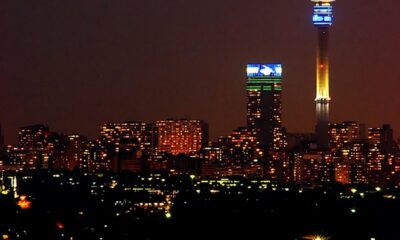News
Eight Weeks in the Danger Zone: Eskom’s Winter Struggles Continue

As cold grips South Africa, Eskom battles high breakdowns and rising pressure on the national grid
South Africa’s national power supplier, Eskom, has spent the past eight weeks in what it calls a “danger zone”, as unplanned outages continue to exceed the 13,000 MW threshold, the level at which the utility can no longer guarantee load-shedding won’t return.
The latest figures show that 14,496 MW of generating capacity was offline due to breakdowns in the past week, nearly 1,500 MW over Eskom’s self-defined “safe limit”, and almost 2,000 MW worse than this time last year.
Winter Holding, Just Barely
Despite these red flags, Eskom insists the grid remains stable for now.
“Occasional system constraints do arise,” said the utility, “but they are being effectively managed with emergency reserves.”
That means more reliance on diesel-powered open-cycle gas turbines (OCGTs) expensive to run and not sustainable for long. Encouragingly, OCGT usage dropped this past week, but Eskom has already spent nearly R4.85 billion on diesel this year, up from R2.1 billion in the same period last year.
Why Is the Breakdown Rate So High?
Eskom says part of the issue is not new failures, but how it reports them.
Notably, Medupi Unit 4’s 800 MW capacity was added to the breakdown tally on 1 June 2025, after being previously excluded due to long-term offline status. This alone pushes up the average.
However, it’s not just technical accounting. The Unplanned Capability Loss Factor (UCLF) a key indicator of mechanical failures, has climbed to 29.74%, worse than last year’s 27.17%. This means nearly a third of Eskom’s generating capacity is regularly unavailable due to unexpected issues.
Energy Availability vs. Maintenance
Eskom has been cutting back on scheduled maintenance to meet rising winter demand. Planned outages averaged just 3,528 MW during the last week of June, and the Energy Availability Factor (EAF) has hovered between 61% and 64%, a modest improvement, but still below ideal.
The year-to-date EAF sits at 58.21%, down from 61.39% last year.
This strategy keeping plants online longer at the risk of future breakdowns, is a tightrope act. Experts warn that delaying maintenance now could extend the energy crisis into 2026 and beyond.
Will Load-Shedding Return This Winter?
So far, Eskom’s May 2025 winter outlook is holding. According to that plan:
-
If breakdowns stay below 13,000 MW, no load-shedding is required.
-
At 15,000 MW, expect Stage 2 cuts up to 21 days of outages between May and October.
-
Above 16,000 MW, all bets are off.
Right now, we’re teetering in the middle: consistently above 13,000 MW, but just shy of the next red line. Any additional strain, whether from cold fronts, unexpected plant failures, or fuel supply issues, could tip the balance.
Public Patience Wears Thin
South Africans have shown resilience during long months of blackouts, but patience is fading fast. On platforms like X and Facebook, users are already sharing power-saving tips, checking EskomSePush religiously, and wondering why, after all the promises, the lights still flicker.
“There’s no confidence left,” one user posted. “Just recycled excuses.”
What’s Next for Eskom?
The utility says 2,350 MW of generation capacity is expected to return by early next week, a crucial buffer. But it’s also running out of financial runway, with fuel, maintenance, and repair costs soaring.
Analysts say real stability won’t come until Medupi and Kusile are fully operational, the grid is diversified, and municipal debt is tackled head-on.
Until then, every cold front brings a new test and Eskom will need more than luck to keep the lights on.
{Source: My Broad Band}
Follow Joburg ETC on Facebook, Twitter , TikTok and Instagram
For more News in Johannesburg, visit joburgetc.com



























